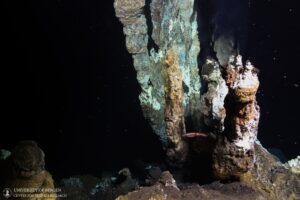Although there is relatively little difference between Arctic and non-Arctic communities in Norway, some traits have historically been more prominent in the north. Given the region’s sparse population, vast distances, natural geographic barriers and dependency on traditional subsistence economies (fisheries, reindeer herding, and agriculture), the northern counties have historically been poorer (in terms of GDP per capita) and less developed than the rest of Norway. As the Norwegian welfare state grew after WWII, the North was earmarked for regional development funds to help the region overcome the natural barriers that did not exist to the same extent in the south. Albeit with a somewhat higher level of public employment and a slightly higher percentage of the population on welfare than the national average, the northern counties are no different than the other counties across Norway that also experienced a de-industrialization in the 1990s. In the north, this was coupled with the decline of the fisheries industry as quotas were reduced and the fleet modernized.
A system of differentiated employer’s social security tax is meant to improve the conditions of operating businesses in the north. Similarly, parts of Troms og Finnmark county have since 1990 had a lower income tax, cancellation of student debt, and a higher rate of child support. In recent years, however, North Norway has been experiencing relatively high economic development. The region’s emphasis on seafood and fisheries, industrial products and tourism has helped spur the growth. The region is experiencing steady population growth, while the increasing focus on the Arctic has helped the northern communities frame their regional development in a new context.
As with the rest of the Arctic, attention turned towards the potential of arctic industries in the north of Norway at the beginning of the new millennium. The emphasis was on the north as a new province for oil and gas development. Since 1979, seismic activity and exploratory drilling have taken place in the Barents Sea, with over a hundred wells drilled. Yet, in spite of substantial discoveries, there are only two producing fields as of January 2019—the Equinor Snøhvit field that has produced liquefied natural gas since 2006 and the ENI Goliat oil field in production since 2017. The main barriers for Barents Sea offshore development have been the lack of suitable markets and lack of infrastructure. Although there have been suggestions of extending the pipeline system transporting gas to Europe up to the Barents Sea (it currently stops more or less at the Arctic Circle), the low gas prices and the lack of political commitment in Europe have halted development, albeit not completely. Currently, the oil field Johan Castberg is being developed by Equinor. The more accessible offshore area around the Lofoten and Vesterålen archipelagos are thought to hold considerable hydrocarbon resources, but environmental concerns and popular resistance have hampered development there.
Norway also has the fifth most valuable shipping fleet in the world, and a substantial interest in a potential increase of traffic via the Northeast Passage. Kirkenes, on the border with Russia, has positioned itself, through business and potential harbour investments, as a receiving port. This development has yet to take off. Similarly, the prospects of mineral development in North Norway was heralded at the start of the millennium as the next big industry in Norway. In contrast to Sweden and Finland, Norway has, with some exceptions, not developed its relatively mineral rich mountains. As with the oil and gas sector, environmental concerns have halted development. Additionally, the mineral industry has met resistance from local and Sámi communities, as the land in question is already being used by reindeer herders
An industry which has had more success is fisheries and aquaculture. The Barents Sea cod is the largest cod stock in the world, and has in recent years seen record yields. Russia and Norway cooperate on managing this shared fish stock, often portrayed as a success story of bilateral resource management. Other types of fisheries and aquaculture—like salmon, herring, mackerel, shrimp, king and snow crab, and halibut—are also found in Norway’s Arctic waters. This blue industry is being heralded as the future for the north.
Similarly, the number of tourists visiting has increased steadily, spurring regional growth and employment. In addition, the region has a number of other sectors that are seeing rapid development, like research institutes and universities, IT companies, and the development of technological niche products.


